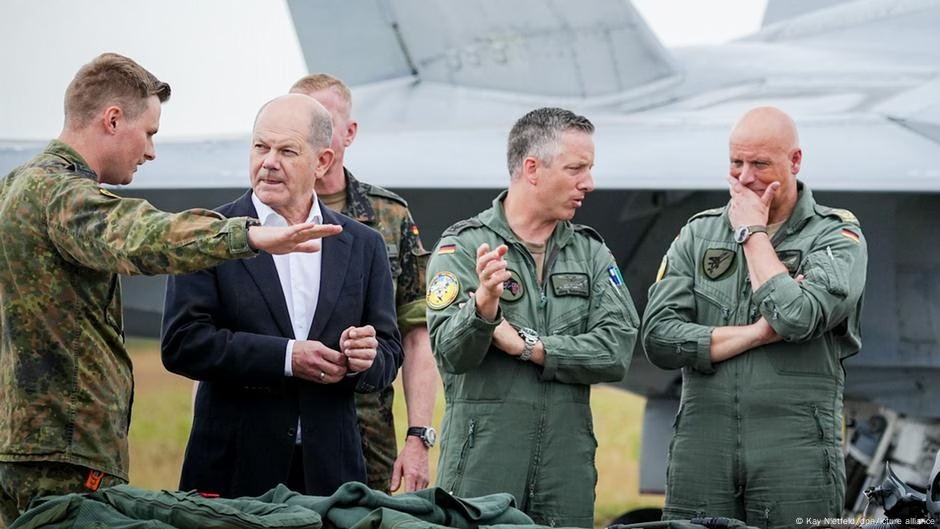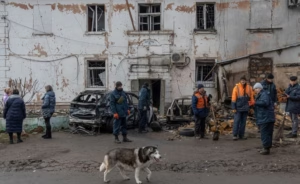UK Prime Minister Keir Starmer has responded to these apprehensions by announcing an increase in the UK’s defense budget to 2.5% of its gross domestic product (GDP) by 2027, up from the current 2.3%. He stressed that this investment would need to be followed by additional defense spending in the years to come and would reflect the UK’s commitment to “ensuring a just and lasting peace in Ukraine and the necessity for Europe to increase its efforts for collective European security.”
In Germany, political leaders are still debating how to respond to the British Prime Minister’s call for a European “coalition of the willing” that would take the continent’s defense into its hands. Recent general elections saw the leader of the conservative CDU/CSU alliance, Friedrich Merz, emerge as the victor; he is currently in negotiations with the outgoing Chancellor Olaf Scholz’s Social Democrats to form a new government. At the heart of these talks is the relaxation of Germany’s strict borrowing rules to fund increased defense spending.
Assessing the Severity of the Russian Threat
For decades, European NATO members have relied on the United States, the alliance’s most powerful economic nation, to undertake the primary defense burden for the continent. Now, European leaders are contemplating how to react to the potential collapse of NATO should Trump withdraw US support.
Rafael Loss, a defense and security expert at the European Council on Foreign Relations (ECFR), dismisses an immediate threat of “Russian troops outside Berlin tomorrow” but warns that Russia’s objective is to “fracture NATO and the EU to attain military supremacy over Europe.”
The Brussels-based think tank Bruegel even considers the possibility of a Russian attack on an EU member state as “conceivable.”
“Assessments by NATO, Germany, Poland, Denmark, and the Baltic states estimate that Russia is ready to attack within three to ten years,” the think tank concludes in a recent analysis.
In response to Russia’s war in Ukraine, Germany created a €100 billion ($103 billion) special debt fund to modernize its long-neglected armed forces. Although not yet fully utilized, the funds are already allocated. However, a steady increase in Germany’s regular defense budget has yet to be realized.
The Challenge of Replacing US Military Offers
The Bruegel economists calculate that US military aid to Ukraine in 2024 consistent of €20 billion out of a total €42 billion. “Replacing the US, the EU would only need to spend an additional 0.12% of its GDP,” they stated in their analysis, “a feasible amount.”
Bruegel has also outlined the improvements Europe would need to avoid being defenseless without US support. Besides replacing US combat brigades, ships, and aircraft, boosting European capabilities in intelligence, communications, and command infrastructure is essential. Tailoring these large and complex military units would demand significant investment and time.
Germany’s military capabilities, for instance, remain far below both required levels and alliance commitments. Berlin’s pledge to provide NATO with two divisions — approximately 40,000 soldiers — is experiencing considerable delays; a more fitting contribution from Germany, considering its size, may be closer to 100,000 troops.
However, replicating intangible capabilities, including operational structures and military experience, will be more arduous. Establishing these capabilities could cost Europe hundreds of billions of euros and take many years.
Jack Allen-Reynolds, deputy chief economist for the eurozone at Capital Economics, believes European defense spending will need to increase substantively. In the short term, he suggests an additional €250 billion annually would be fair, bringing EU defense budgets to approximately 3.5% of GDP.
Financing Europe’s Rearmament
Allen-Reynolds proposes several methods to finance this massive expenditure. One option is repurposing the European Investment Bank (EIB) or establishing a new “rearmament bank” to offer substantial support to the defense sector with minimal impact on national budgets.
Alternatively, the EIB could provide loans to defense companies or issue bonds specifically for military projects. This method would not directly fund military personnel or equipment but would finance European arms manufacturers to augment military production.
Allen-Reynolds favors launching a new program for joint borrowing by the EU, similar to the €750 billion pandemic recovery fund, also known as NextGenerationEU. “This would be a relatively inexpensive way for the EU to access the markets, benefiting from an AAA credit rating and allowing fiscally constrained governments to avoid borrowing on their own balance sheets,” he explained.
However, such a plan — effectively issuing Eurobonds — has been opposed by all major political factions in Germany, including that of prospective chancellor Friedrich Merz.
A Boost to the Eurozone Economy?
Bruegel believes that from a “macroeconomic perspective,” a debt-funded surge in defense spending could even bolster European economic activity “at a time when external demand might be diminished by the impending trade war.”
Concerns over Donald Trump’s threat to impose high tariffs on European cars have led investors to divest in auto stocks. Instead, they’ve shifted to purchasing shares in defense companies, seeing them as boasting strong growth potential.
Rafael Loss also believes that an expansion of Germany’s military could have beneficial effects on the national economy and could contribute to overcoming the country’s economic woes. “If jobs in the automotive supply chain could be saved by shifting production to defense-related goods, that would certainly be beneficial,” he noted, while cautioning against “overestimating” the broader economic impact.
This article was originally composed in German.








